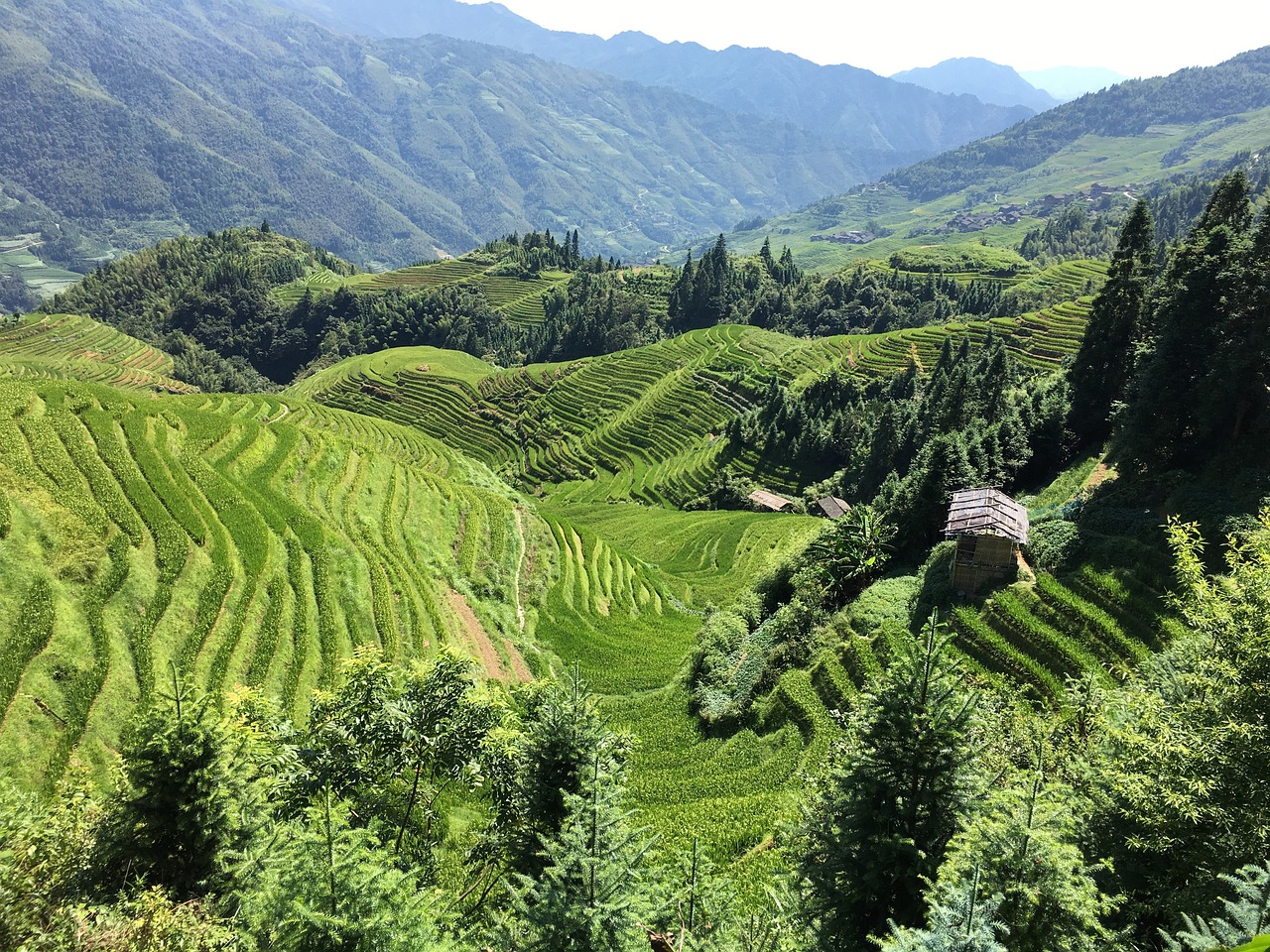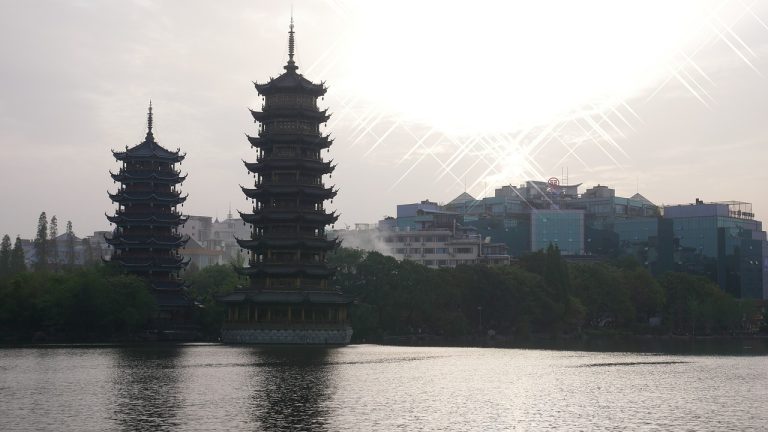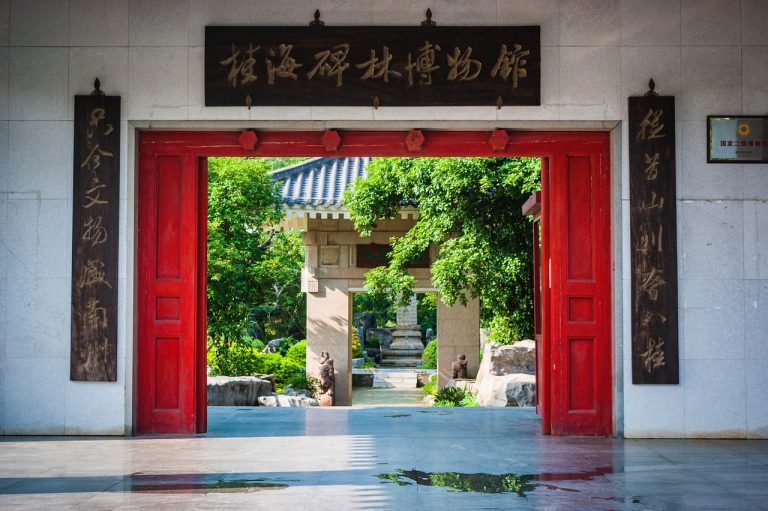Guilin China Video
Historical Treasures of Guilin China: Reliving the Past
Guilin, located in the Guangxi Zhuang Autonomous Region of China, is a city known for its breathtaking landscapes and rich history. The city is home to numerous historical treasures that offer a glimpse into its past. From ancient temples to preserved cultural sites, Guilin is a treasure trove for history enthusiasts. In this article, we will explore ten sections that highlight some of the most significant historical treasures in Guilin.
Reed Flute Cave
The Reed Flute Cave, also known as “Ludi Yan,” is a natural limestone cave located in Guilin. It gets its name from the reeds growing outside the cave, which can be used to make flutes. Inside the cave, visitors are treated to a mesmerizing display of stalactites and stalagmites, illuminated by colorful lights. The cave is adorned with ancient inscriptions, dating back over 1,000 years. Its natural beauty and historical significance make it a must-visit attraction in Guilin.
- Stunning rock formations: The Reed Flute Cave is famous for its unique and intricate rock formations. These formations come in various shapes and sizes, resembling animals, plants, and mythical creatures.
- Ancient inscriptions: The cave walls are adorned with inscriptions from different dynasties, including the Tang and Song dynasties. These inscriptions provide valuable insights into the history and culture of Guilin.
- Colorful lighting: The cave is illuminated with colorful lights, enhancing the beauty of the rock formations and creating a magical atmosphere.
- Historical significance: The Reed Flute Cave has played a significant role in Guilin’s history, as it was used as a hideout during wartime and as a source of inspiration for poets and artists.

Elephant Trunk Hill
Elephant Trunk Hill, or “Xiangbi Shan,” is a famous landmark located at the confluence of the Li River and Peach Blossom River in Guilin. The hill gets its name from its resemblance to an elephant drinking water from the river. It is considered the symbol of Guilin and has been a source of inspiration for poets and artists throughout history.
- Natural wonder: Elephant Trunk Hill is a unique geological formation that showcases the beauty of nature. The hill is made of limestone and features a large cave known as Water Moon Cave.
- Water Moon Cave: The cave is located at the base of the hill and is accessible by boat. Inside, visitors can admire stalactites and stalagmites, as well as a stone tablet with inscriptions dating back to the Tang Dynasty.
- Pagoda on the hill: At the top of Elephant Trunk Hill, there is a pagoda called Puxian Pagoda. Built during the Ming Dynasty, the pagoda offers panoramic views of Guilin and the surrounding landscape.
- Cultural significance: Elephant Trunk Hill has been a symbol of Guilin for centuries and is deeply rooted in the city’s culture and history. It is often depicted in traditional Chinese paintings and literature.

Seven Star Park
Seven Star Park, or “Qixing Gongyuan,” is the largest comprehensive park in Guilin and covers an area of approximately 120 hectares. The park is named after the seven peaks within its boundaries, which are said to resemble the pattern of the Big Dipper constellation.
- Natural beauty: Seven Star Park is renowned for its picturesque landscapes, including lush forests, crystal-clear streams, and karst formations. It offers a serene retreat from the bustling city.
- Pagodas and pavilions: Within the park, there are several pagodas and pavilions that showcase traditional Chinese architecture. These structures provide a glimpse into the country’s rich cultural heritage.
- Zoo and botanical garden: Seven Star Park is home to a zoo and a botanical garden, making it an ideal destination for nature lovers. Visitors can observe various animal species and explore the diverse plant life.
- Historical relics: The park also houses historical relics, such as the Seven Star Cave, which contains ancient rock carvings and inscriptions dating back thousands of years.

Gui Opera
Gui Opera, also known as “Guixi,” is a traditional Chinese opera originating from Guilin. It is renowned for its unique singing style, graceful dance movements, and colorful costumes. Gui Opera has a history of over 600 years and is considered one of the cultural treasures of Guilin.
- Distinctive singing style: Gui Opera is characterized by its high-pitched singing style, known as “lianhualao,” which requires great vocal control and skill.
- Colorful costumes: The performers in Gui Opera wear vibrant costumes that reflect the traditional attire of the region. These costumes add to the visual spectacle of the opera.
- Traditional stories: Gui Opera often depicts historical events, legends, and folk tales. The performances provide a window into the cultural heritage and customs of Guilin.
- Emotional expression: The actors in Gui Opera use subtle facial expressions and body movements to convey emotions and tell stories. It is a captivating art form that requires both physical and emotional dexterity.
Yangshuo West Street
Yangshuo West Street, or “Xi Jie,” is a historic street located in Yangshuo, a county under the jurisdiction of Guilin. It is a vibrant hub for tourists and locals alike, offering a glimpse into the region’s history and culture.
- Ancient architecture: Yangshuo West Street is lined with well-preserved buildings dating back to the Ming and Qing dynasties. The architecture reflects the traditional style of southern China.
- Local crafts and souvenirs: The street is dotted with shops selling a variety of local crafts, souvenirs, and traditional Chinese products. Visitors can find unique items to take home as mementos.
- International atmosphere: Yangshuo West Street is popular among international tourists, and many of the shops and restaurants cater to a diverse range of tastes and preferences.
- Street performances: Throughout the day, street performers entertain visitors with traditional music, dance, and acrobatics. The lively atmosphere adds to the charm of the street.
Longji Rice Terraces
The Longji Rice Terraces, also known as the Dragon’s Backbone Rice Terraces, are located in Longsheng County, near Guilin. These terraces are a marvel of agricultural engineering and have been cultivated for over 700 years.
- Stunning landscape: The Longji Rice Terraces form a cascading pattern on the slopes of the mountains, resembling the scales on a dragon’s back. The terraces create a breathtaking panorama, especially during the rice planting and harvesting seasons.
- Local minority culture: The terraces are predominantly cultivated by the Zhuang and Yao ethnic minority groups. Visitors can learn about their unique customs, traditions, and way of life.
- Hiking trails: There are several hiking trails that allow visitors to explore the terraces up close and enjoy the scenic beauty of the surrounding mountains and villages.
- Photography opportunities: The Longji Rice Terraces offer countless opportunities for photography enthusiasts to capture the beauty of the landscape and the daily lives of the local communities.
Guilin Museum
The Guilin Museum is a comprehensive museum dedicated to the history, culture, and natural heritage of Guilin and its surrounding areas. It showcases a vast collection of artifacts, artworks, and exhibits that span thousands of years.
- Archaeological discoveries: The museum houses a significant number of archaeological artifacts, including pottery, bronze objects, and ancient coins. These artifacts provide insights into the region’s prehistoric civilizations.
- Traditional arts and crafts: Visitors can admire exquisite examples of traditional Chinese arts and crafts, such as calligraphy, painting, embroidery, and ceramics.
- Natural history exhibits: The museum also features exhibits on the diverse flora and fauna of Guilin, including specimens of rare plants, fossils, and taxidermy displays.
- Interactive displays: The Guilin Museum incorporates interactive displays and multimedia presentations to engage visitors and enhance their understanding of the exhibits.
Folded Brocade Hill
Folded Brocade Hill, or “Diecai Shan,” is a scenic spot located in the northeastern part of Guilin. It is named after the colorful rocks on the hill that resemble folded brocade, a type of silk fabric.
- Scenic beauty: Folded Brocade Hill offers stunning views of Guilin’s cityscape, the Li River, and the surrounding karst mountains. The hill is covered with lush vegetation and features well-manicured gardens.
- Historical sites: Within the park, there are several historical sites, including the Solitary Beauty Peak and the Wind Cave. These sites have been celebrated in Chinese literature and poetry.
- Colorful rocks: The rocks on Folded Brocade Hill come in various colors, ranging from red and yellow to green and black. They create a vibrant and picturesque setting.
- Teahouses and pavilions: Visitors can relax in traditional teahouses and pavilions scattered throughout the park, enjoying a cup of tea while taking in the panoramic views.
Prince Jingjiang Mansion
Prince Jingjiang Mansion, also known as “Jingjiang Princes’ City,” is a well-preserved mansion complex located in Guilin. It was built during the Ming Dynasty and served as the residence of Prince Jingjiang, a descendant of the Ming royal family.
- Architectural grandeur: The mansion complex showcases traditional Chinese architectural styles, with grand halls, courtyards, and intricately carved wooden decorations.
- Historical artifacts: Inside the mansion, there are numerous artifacts on display, including furniture, calligraphy, paintings, and porcelain. These artifacts offer a glimpse into the lifestyle of the Ming royalty.
- Imperial gardens: The mansion is surrounded by beautiful gardens, featuring ponds, pavilions, and winding pathways. It is a peaceful oasis in the heart of the city.
- Cultural events: Prince Jingjiang Mansion hosts cultural events and performances, such as traditional music concerts and theatrical shows, to promote the cultural heritage of Guilin.
Conclusion
Guilin, China, is a city steeped in history, with a wealth of historical treasures waiting to be explored. From natural wonders like the Reed Flute Cave and Elephant Trunk Hill to cultural landmarks like Gui Opera and Prince Jingjiang Mansion, Guilin offers a diverse range of experiences for history enthusiasts. By visiting these historical sites, visitors can relive the past and gain a deeper appreciation for the rich cultural heritage of Guilin.
References
– guilintourist.com
– travelchinaguide.com
– chinahighlights.com
– traveltochinaguide.com






